Picture books are excellent teaching tools and these books teach children about poverty, homelessness and hunger. These books also attempt to bring to light and give voice to the economically marginalized, which includes millions of children who need to see themselves in books, too.

These picture books about poverty show a spectrum of economic struggles and insecurity. Some families in these books struggle to buy extras, some are homeless, and some families live with economic instability and hunger. I didn't want make a list of books that only show protagonists in abject poverty. Children can understand a range of experiences and when they see their own experiences reflected back at them will know they are not alone. I've divided the book list into loose categories— poverty and economic insecurity, hunger, and homelessness— but there is certainly crossover in all of these categories.
(Note: book covers and titles are affiliate links.)
Picture Books about Poverty and Economic Insecurity
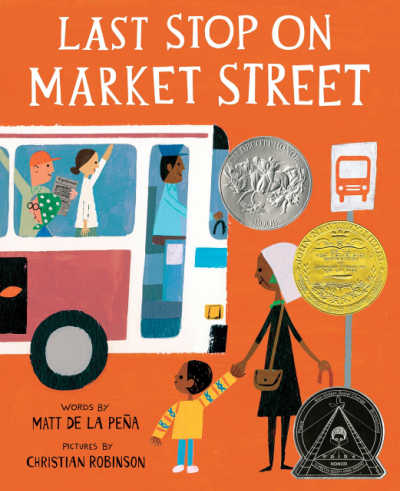
Last Stop on Market Street by Matt de la Peña, illustrated by Christian Robinson. A boy and his grandma catch the bus. We don't yet know where they are headed, but along the way the boy asks questions about why they don't have certain luxuries. He wants to know why they don't have a car or an ipod. The grandma has a ready answer about the advantages of what they do have and encourages him to think of positive aspects of lacking material goods. When they reach their destination we find out that they were traveling to help out at a soup kitchen.
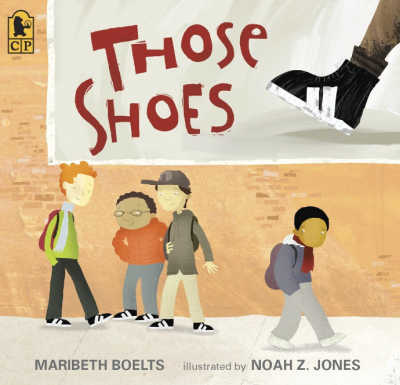
Those Shoes by Maribeth Boelts, illustrated by Noah Z. Jones. This book deals well with the topic of poverty and the importance of putting others' needs ahead of our own wants. Jeremy wants the latest pair of trendy shoes. All his friends have them but his grandmother can't afford to buy him a pair. I like that she never shamed him for wanting what he couldn't have. Jeremy finds a pair at a thrift store and buys them even though they are too small. When he makes friend with a kid at school who needs them more than he does, he gives them to him. I love how this book is honest about the struggles Jeremy has about giving the shoes away. He really wants to keep them for himself but in the end does the right thing on his own. Jeremy feels embarrassed about the shoes he does have to wear and that doesn't disappear, making the act of kindness even more powerful.
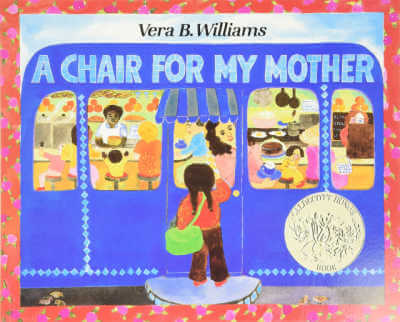
A Chair for My Mother by Vera B. Williams. is a gorgeous book about familial love. The narrator, a young girl, describes how her family lost everything in a fire. They found a new home, and their neighbors donated furniture, but what they lacked was a comfortable chair for her mother to rest in after her days of work as a waitress. The family saves their change in a jar and when the coins finally reach the top, they set off to buy the perfect chair. The touching story shares a valuable lesson not just about perseverance and love, but about recognizing that for many families, having a good chair is a luxury.

The Table Where Rich People Sit by Byrd Baylor, illustrated by Peter Parnall. Mountain Girl, as she is nicknamed, lives in the desert with her family. Her parents work outdoors and they have few belongings. Mountain Girl wonders what it would be like to earn money so she could buy material possessions. After talking with her parents who invite her to ponder the value of the natural world, she learns how to appreciate what she has and the beauty around her.
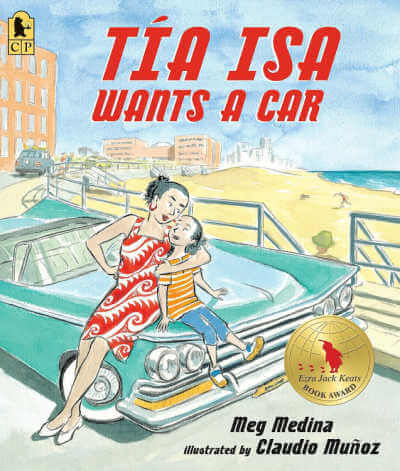
Tía Isa Wants a Car by Meg Medina, illustrated by Claudio Munoz. Tía Isa dreams of having a shiny green car to drive to the beach! Her lack of funds will not hold her back! The narrator (her niece) decides to help earn the money and works odd jobs to save up. Together, Tía and her niece go to the dealership and pick out a car. I like the positive relationships among extended family members and how they work together to make Tía's dream come true.

Yard Sale by Eve Bunting, illustrated by Lauren Castillo. A young narrator describes the day her family has a yard sale in order to downsize their material possessions before their move to a much smaller apartment. Callie feel sad at the loss of the items, even though she knows that her family can no longer afford to live in the large house. Her parents help her understand that they are still a loving family and that moving is the next adventure, even if it means having doing without.
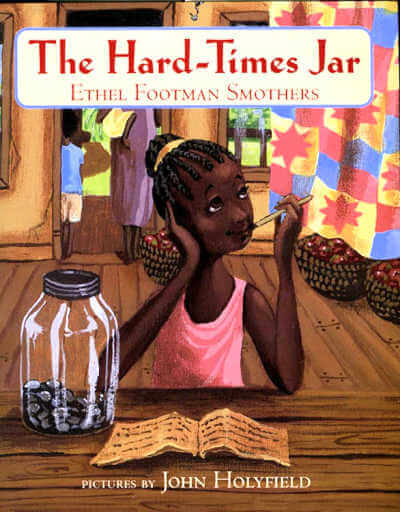
The Hard Times Jar by Ethel Footman Smothers, illustrated by John Holyfield. Emma's parents are migrant workers and money is always scarce. Emma helps unpack their meagre belongings in their new house near the apple orchard where the family will help pick fruit. When she unpacks her mama's "hard times jar," Emma gets an idea of how she might earn money for her greatest wish—to own a store-bought book. When her mother insists she go to school instead of working, Emma is disappointed. However, it turns out school is the key to her dreams.
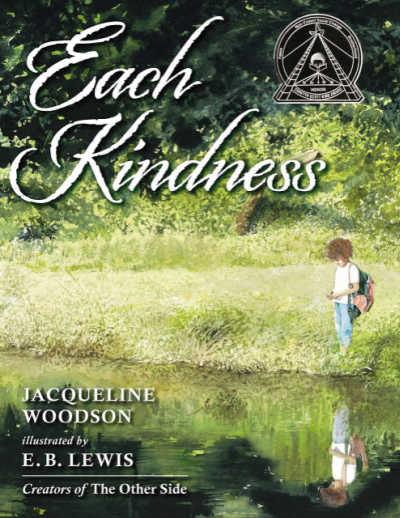
Each Kindness by Jacqueline Woodson, illustrated by E.B. Lewis. New girl, Maya, finds herself alone at school. Her obvious poverty sets her apart and the other children reject her overtures of friendship. Another girl, Chloe, narrates the action and the way the other children reject Maya, including her own admission, “She’s not my friend.” One day, their teacher drops a stone into a bowl of water to demonstrate how powerful the ripples from a single act of kindness can be. “Even small things count,” she says. Chloe decides that the next day she will be kind to Maya, but Maya never returns to school and Chloe regrets that she never grabbed her chance to do the right thing.. This book could so easily sink into the depressing and didactic, but Woodson’s beautiful text elevates the story into a moving reminder to show kindness every chance we get.
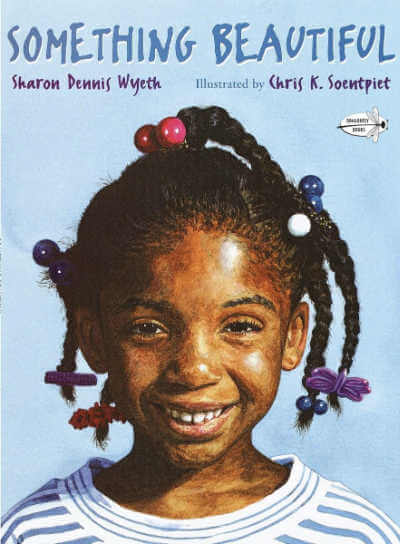
Something Beautiful by Sharon Dennis Wyeth, illustrated by Chris K. Soentpiet. In a poor city neighborhood a teacher's word on a blackboard inspires a girl to look for something beautiful in her surroundings, despite the run-down sidewalks and litter out the window. Her search lets her find happiness and beauty in gestures from the friendly gestures of others. In the end, the girl's mother lovingly tells her that she is "something beautiful." While the backdrop of the story is clearly an economically-depressed neighborhood, the message is not about the poverty but about the girl's ability to find hope and optimism.
Picture Books about Hunger
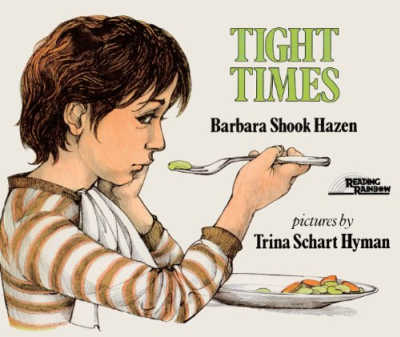
Tight Times by Barbara Shook Hazen, illustrated by Trina Schart Hyman. A boy wants a dog, but his parents tell him "times are tight." The young narrator explains that tight times means they have soup for dinner instead of roast beef, that they eat bulk cereal instead of the kind in small boxes, and go to the sprinklers in the park instead of vacationing at the lake. One day his father loses his job and the boy heads out to the stoop while his parents talk. Outside he finds a cat. It's not a dog, but his parents let him keep it. I like that there is no tidy solution to the story. Their troubles are not solved, the father does not miraculously get a new job. Instead, the life in the loving family goes on and we are left with a realistic picture that not everything a swift resolution.
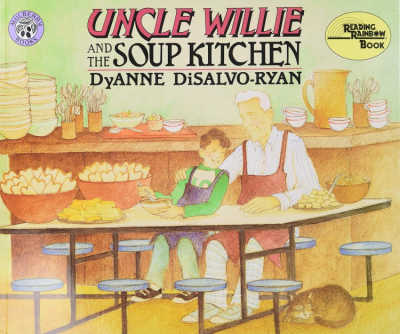
Uncle Willie and the Soup Kitchen by Dyanne Disalvo-Ryan. A young boy narrates his experience of going with his Uncle Willie to work in a soup kitchen. There is a lot of text in this book and the storytelling is not very inventive, but I still recommend it. It is one of the few picture books that show the workings of a soup kitchen and will spark conversations with kids about serving one's community.

Maddie's Fridge by Lois Brandt, illustrated by Vin Vogel. Sofia and Maddi play after school but when the girls go to Maddi's apartment and the hungry Sofia looks for a snack she is surprised to find an almost empty fridge. Maddi makes Sofia promise not to tell anyone that her mom does not have enough money for the grocery store. Sofia worries about what to do, and ultimately makes the right decision. I like how this book emphasizes community, as well as kindness towards individuals.
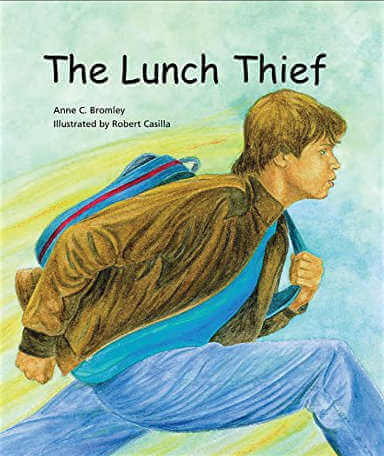
The Lunch Thief by Anne C. Bromley, illustrated by Robert Casilla. Rafael loves the lunch his mom makes him one day he sees Kevin stealing it. After lunches start to disappear regularly at the school Rafael gets mad. However, after he learns the truth about why Kevin was stealing lunches, Rafael decides to solve the problem with compassion and friendship.
Picture Books about Homelessness

Fly Away Home by Eve Bunting, illustrated by Ronald Himler. A homeless father and son live in the airport. The young narrator describes how he and his dad spend their days trying not to be noticed. The pair are friends with another homeless family who look after the boy while his father is at work. The story does not have a resolution; we leave the boy hopeful that one day he can leave the airport like a bird trying to fly away.
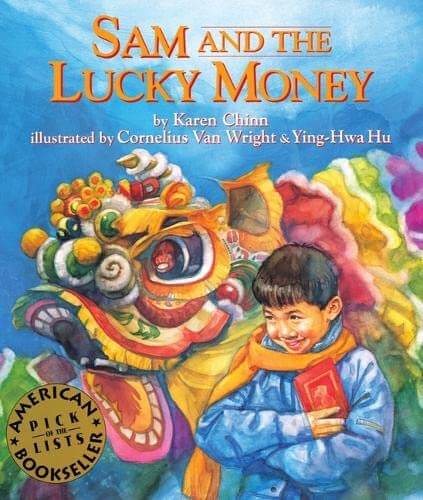
Sam and the Lucky Money by Karen Chinn, illustrated by Cornelius Van Wright and Ying-Hwa Hu. Sam is excited to be able to spend his lucky New Year money. He has four dollars and his mom has told him he can buy anything he wants. On their trip through the neighborhood Sam notices a homeless man with bare feet. As he contemplates how to spend his money he gets frustrated that the four dollars is never enough to buy what he wants. His mother reminds him to appreciate what he has. During a second encounter with the homeless man, Sam understands how he can best spend his money.
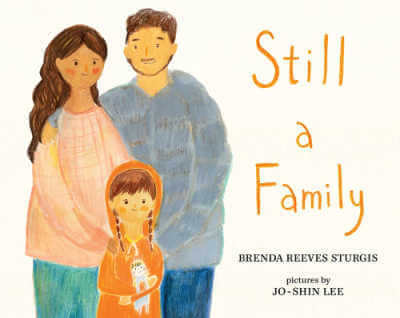
Still a Family: A Story of Homelessness by Brenda Reeves Sturgis, illustrated by Jo-Shin Lee. A homeless family is separated in the shelter system; the father must live separately in the men's section. The young girl, however, tells us that the three of them make certain that they still as act much as possible as a family, meeting for play time in the park when they can. She describes staying with one parent while the other looks for work. Given that so many children live in shelters, books like this one are important to give voice to that population.
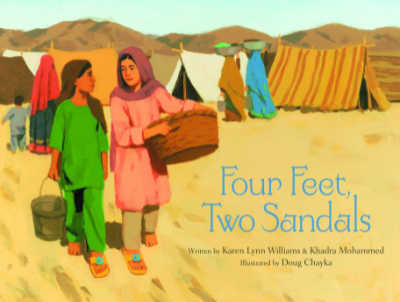
Four Feet Two Sandals by Karen Lynn Williams, illustrated by Khadra Mohammed. Two girls in a Pakistan refugee camp each find one shoe. Lina and Feroza meet and decide to share the sandals. A friendship develops and they share details about why they have come to the camp. The text contains descriptions about life in the camp, such as waiting in long lines for water, washing clothes in the river and waiting at home while boys go to school. This is an important book that humanizes the experiences of children in refugee camps.
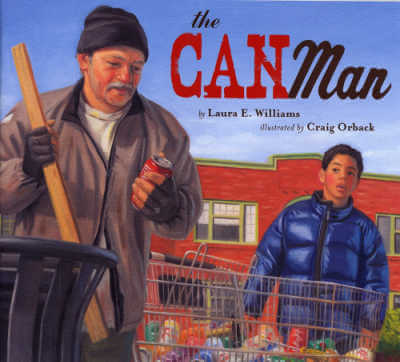
The Can Man by Laura E. Williams, illustrated by Craig Orback. Most kids can relate to wanting a special item and having to save up for it because either their parents can't or won't buy it. In this case, Tim wants a skateboard but his parents can't afford it. He starts to collect cans to turn in for the recycling fee. He collects several bags of cans and is helped by Joe, the Can Man, even though Joe doesn't seem to be able to find any cans himself. After Tim earns the money for his skateboard he has to decide if he keeps it for himself or helps another with a greater need.
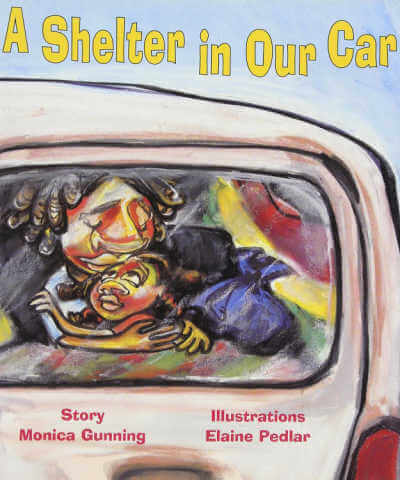
The Shelter in Our Car by Monica Gunning, illustrated by Elaine Pedlar. After the death of her father, Zettie and her mama move to the United States from Jamaica. But Mama is unable to find steady work and mother and daughter live in their car. Author Monica Gunning does not sugar coat the struggles and although mother and daughter have a close loving relationship, Zettie describes the hardships of noise, bullies, and searching for food. The book's ending is optimistic, but does not offer any easy answers, and children are invited to try and work for change.
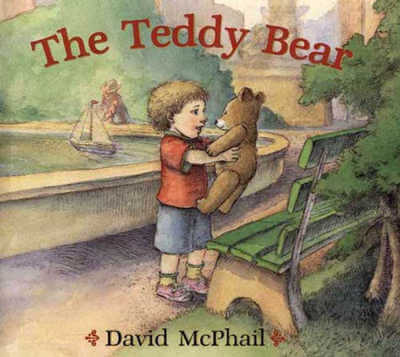
The Teddy Bear by David McPhail. A young boy accidentally leaves his beloved teddy bear while out for the day. Understandably upset to have lost his stuffed friend, he looks for it only to discover it has been found and affectionately adopted by a homeless man. The boy's empathy wins out and he decides to allow the man to keep the bear.
More books lists:
- See all my book lists about social issues
- Picture books that teach empathy
- Picture books about kindness
- Picture books about global social justice
Further resources:
- How to Teach Kids about Hunger (Feeding America)
- 7 Lesson Plans to Teach Kids about Hunger (Kid World Citizen)
- Teaching Kids about Poverty (Teaching Tolerance)



Micha says
I'm looking forward to checking out every book on this list. One I think should be added is, 100 Dresses. I just read it with my kids and loved it dearly.
Micha says
It's actually "The Hundred Dresses" by Eleanor Estes
Erica says
Excellent book!
Erin Murphy says
So many books here that are new to me! I️ look forward to exploring. I would add Muskrat Will Be Swimming by Cheryl Savageau to your list.
Erica says
Thanks for the suggestion.
Brittany says
“I See You” is another great one, no words, just pictures.
Erica says
Thanks for the recommendation.
Rhonda L Bolling says
What a great list! Some of my favorites are on here.
Could I add mine I just published this year to the list? It's called "Can a Cookie Change the World?" A perfect read-aloud that inspires and motivates kids to look around for people needing help and taking action. A true story about a big-hearted young girl who takes community service to a new level.
Sure to warm every reader or listener's heart and a genuine tug for the reader to awaken the superhero inside of them just waiting to make a difference.